History
Silly Features That Never Made It

In most modern cars, you can find a selection of neat features to make the task of driving easier and more pleasant. Some of the ones I particularly like include active cruise control, ambient lighting, steering wheel mounted audio controls, reversing cameras and Bluetooth connectivity so my phone and car talk to each other. I guess most of us have our favourite driver aids.
However, over the over 100 years that the car has been around, manufacturers and designers have come up with some features that flopped, mostly because they were plain silly ideas. We’re not talking about things that have been phased out because they are no longer in high demand, such as cigarette lighters (which have morphed into 12-volt power outlets), or because they were a bit iffy in terms of safety (such as bench seats). Instead, we’re talking about ideas that were totally nuts. Here’s the looniest ones that were put forward by designers with a straight face.
In-Car Toilets
In the late 1940s, an inventor named Louie Mattar customized his Cadillac so that he could go on a long-haul trip of around 6000 miles without stopping, even to refuel. While most of us would be more interested on how you manage to get something that goes for that long without refuelling, which wouldn’t be silly, quite a few designers in the 1950s considered installing one of the other things that Mattar put in his customized car: a toilet. Yes, a toilet that the driver or passenger can use without leaving the car. However, this proved to be impractical, considering how easy it is to simply pull over at a public loo, or café or garage – or, in remote and rural areas, a handy bush.
Flamethrowers
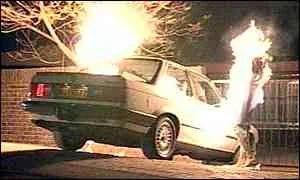
Yes, seriously. In the late 1990s, when violent crime was a real problem in Johannesburg, South Africa, one inventor decided that the best way to protect drivers from carjackings was to install aftermarket flamethrowers that could be activated in self-defence. This was designed to use gas to create a fireball that didn’t damage the paint. The laws at the time allowed South Africans to use deadly force in self-defence, and the fireballs sent out by the “BMW Blaster” weren’t lethal; they “merely” blinded the would-be carjackers. The downsides were that (A) a matching fireball was released from the opposite side of the vehicle, potentially injuring innocent bystanders and (B) flamethrowers have been outlawed by the United Nations. The invention won the Ig-Nobel Peace prize for 1999 and the rumour is that 25 BMWs received this “upgrade”.
http://news.bbc.co.uk/2/hi/africa/232777.stm
Children’s Partition
Another one from the 1950s, back when rear seatbelts (and possibly seatbelts full stop) weren’t really a thing, and kids who monkeyed around in the back seat while the car was moving were threatened with “Don’t make me stop this car!” Some designers thought that perhaps it would be less distracting (and pleasant) for the driver to ensure that the children were neither seen nor heard, courtesy of a privacy partition of the sort found in very posh limousines. However, most parents preferred to know if their kids were screaming, fighting or giving each other black eyes in the rear seat, so this idea didn’t catch on.
Automatic Seatbelts
This one’s from the 1970s to the 1990s when more automatic features were becoming popular. One that didn’t catch on was the automatic seatbelt. An automatic seatbelt worked by taking the shoulder strap from the back of the seat and fastening itself onto the B-pillar when the engine started or the door closed. The user had to buckle up a lap belt him/herself. This idea was very exciting, and in 1977, a law was passed in the US that stated that by 1983 all new cars should either have automatic seatbelts or airbags. The first commercial vehicle to have these automatic seatbelts was the 1975 Volkswagen Golf, and many other manufacturers had offerings with this safety feature, including Hyundai and Toyota. However, the downside was that a seatbelt that isn’t permanently fixed to the B-pillar isn’t as secure as one that is, and users still had to clip in the lap belt separately. They also didn’t play nicely with child seats and were a pain for getting in and out if you were carrying anything. As someone with long hair that occasionally gets pulled into the slot of ordinary retractable inertia seatbelts, I imagine that these automatic seatbelts would have been a right pig for people with long hair. So airbags were the safety feature that won out.
If anybody has experience of a vehicle with an automatic seatbelt, let us know in the comments what you thought of them!
Joystick Steering Systems
Although the original horseless carriages of the late 19th century sometimes used a rudder system rather than a wheel, the steering wheel has become the one we’re all familiar with. However, during the 1990s, Saab decided to fit its some of its 9000 models with a joystick steering system. Fortunately, not all Saab 9000s had them and plenty had the ordinary wheel. The joystick was too easily knocked and wasn’t precise enough. This was particularly an issue, given that the Saab 9000 was pretty responsive when you put your foot on the accelerator (I used to own one, and I rather miss the way that it could dart into the gaps at the intersections like a hummingbird spotting a tasty new flower…).
Coffee Machines
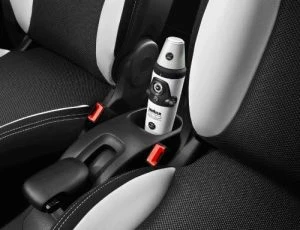
Although coffee doesn’t originate in Italy, all the words we use at the local coffee shop are Italian (latte is the Italian world for “milk”, for example). So it’s not surprising that Fiat, in 2012, attempted to include a real working compact espresso machine that sat in the centre console in its 500L models released in Europe. It was, however, short-lived, probably because it took up the driver’s armrest, and comfort won out over the convenience of coffee on the go, and possibly because hot liquids and sharp corners are not a happy combination. However, there is still part of me that thinks that this idea isn’t so silly and wouldn’t mind one.
4WD and AWD
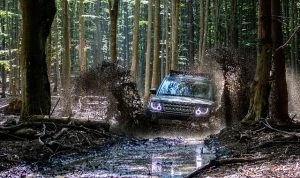
Getting the best grip on the road or terrain is what will get you moving forwards from A to B in the shortest time. Ever since the invention of the first cars, two-wheel-drive has been the mainstay for delivering the engine’s power out to the wheels. At first, two-wheel drive was usually via the rear wheels, as it was much simpler to run a drive shaft from the engine at the front of the car back to the rear wheels to get grip from the rear wheels and to let the front wheels have the job of steering the vehicle.
In saying that, there is also history of 4WD being experimented with back as early as the late 1800s in combination with a traction engine, and, of course, in World War II, the 4WD Willys Jeep was a game-changer.
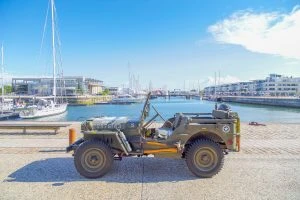
Once mechanical engineering and quality improved over time, the concept of having the engine over the front axle and the front wheels as the driving wheels as well as for steering the vehicle lowered production costs. A combination of rear-wheel-drive and front-wheel-drive cars were available as a matter of course right up to the 1970s and 1980s. Through the 1990s up until the present day, it was more common to see front-wheel-drive cars for everyday driving.
However, it was the 1980s that proved to be a very innovative period in automotive design and mechanical engineering. The greatest advancement in road-going cars was arguably the use of four-wheel-drive to establish greater levels of grip. As racing and supercars demanded faster cars, the need to control all that power (and actually make better use of it) was essential for winning, especially as there was an ever-increasing number of high-performance cars being pulled out of roadside hedges or being wrapped around power poles.
Enter Audi. Audi’s Quattro technology marked a significant moment in high-performance cars’ and supercars’ history. The Audi Quattro’s technology was essentially the dawn of the modern supercar’s 4WD system, and when Audi entered the World Rally Championship in 1981 with their Audi 80 Quattro car, they were unbeatable. The second-place car was over twenty minutes behind the race-winning Audi!
What is the difference between 4WD and AWD?
This is a good question to answer, because there are numerous new cars of all shapes and sizes available with AWD or 4WD. Generally speaking, four-wheel-drive (4WD) is the older off-road system that has the power split 50:50 front to rear. Add a diff-lock into a 4WD system, and these are off-road kings. Four-wheel-drive can be disengaged so that just two-wheel-drive (2WD) can be used on easier terrain, including for when you’ve finished your off-road adventure and you just want to head back home on the tarmac with 2WD only.
The basic principle of an all-wheel-drive (AWD) system is that it can deliver the optimum level of torque to each wheel individually, thus giving the best possible drive and traction. AWD systems tend to be permanently engaged, but with the power split front to rear, along with individual wheels being variable according to what each wheel is sensing and therefore demanding at the time. AWD systems are more complex in that they use sensors which send precise information and values of each wheels’ speed, torque, wheel slip/spin, brake pressure, and steering input to the AWD’s central control system. The control system then adjusts the torque supplied to each wheel.
Land Rovers and many other new serious off-road vehicles use AWD systems with various diff-locking abilities, which also make them real off-road kings. Four-wheel-drive systems are simpler in nature and are thus simpler and cheaper to fix than more complex AWDs. That said, many manufactures like Subaru know how to make solid, dependable AWD systems for their cars and SUVs that are mainly aimed at everyday on-road use and trips up to the ski fields, but with the credentials for performing well even in some fairly serious off-road terrain.
If you live in a part of the world where gravel roads and rainy seasons collide, then an AWD vehicle with decent ground clearance should be parked up your driveway. If your day includes a trek out to the building site, feeding out to stock, or traversing any serious off-road terrain, then a heavy-duty 4WD or AWD vehicle will be your companion. The good news is there are plenty of these sorts of vehicles about, many of which can be bought new at a good price via Private Fleet.
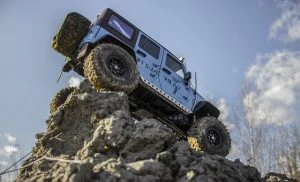
The Fastest Wedge Of Orange In The Galaxy: The Bond Bug

It’s groovy. It’s bright orange. It’s a small car that aimed to capture the younger section of the automotive market that came out during a fuel crisis. It’s the Bond Bug. What’s more, it’s decidedly weird.
The Bond Bug isn’t like any other car found on the roads, and I very much doubt if you’ll see one on the roads of Australia, as only a few thousand were produced during its production run, which lasted from 1970 to 1974 (yes, this car is older than I am). Although the engine is fairly standard – a nice little 700 cc water-cooled inline four engine – it’s the styling that really turned heads and is still turning them. It wasn’t just the fact that the car had three wheels (which one motoring enthusiast described was either one wheel too many or one wheel too few). It also had a futuristic wedge shaped shape with a very space-age lift-up hood as well as two doors and pop-up lights. You could call it a two-door hatchfront instead of a hatchback. It seated two people on its black seats (bright orange and black – you could hardly get something more seventies than that!). It did have a boot that was able to get a small amount of luggage, such as a guitar, but that was about it. The bodywork was made from fibreglass, meaning that the vehicle was light, allowing for better fuel economy (but probably not safety!).
The looks were the brainchild of Tom Karen, a designer for the Ogle company who, among other things, designed the Raleigh Chopper bicycle, a very cool-looking bike that I vaguely remember the cool kids having when I was at primary school (if they didn’t have BMX bikes, that is). The Raleigh Chopper made a brief comeback this year, possibly to commemorate the death of Tom Karen in January 2023.
The Bond Bug was produced by Reliant. Reliant also produced another three-wheeled car, namely the Robin, which is best known as the three-wheeled car that shows up in the Mr Bean skits as the adversary of Mr Bean’s trusty little Mini. This (meaning the Robin, not the Mini) was also designed by Tom Karen.
In terms of performance, the Bond Bug wasn’t quite a supercar, shall we say? The 700ES variant boasted 23 kW of power when the curve peaked at 5000 rpm, and had 52 Nm of torque at the same number of revs. If you think that it could barely overtake a fairly speedy snail or a leisurely cyclist, the Bond Bug was capable of a top speed of 121 km/h and did the 0–100 km/h sprint (?) in 19.7 seconds. Needless to say, it had a rear wheel drive. The handling also left something to be desired.
If you think that the Bond Bug looks like something out of a sci-fi movie, you are absolutely right. In fact, Tom Karen worked with none other than George Lucas and used the chassis from a Bond Bug to create the Landspeeder that Luke Skywalker drives in the early scenes of Star Wars Episode IV: A New Hope (the anti-grav effect is done with mirrors).
The Stanley Steamer
Now that electric cars are becoming more popular, and there’s talk about hydrogen fuel cell vehicles, our attention has been turned to what’s powering our cars. In this context, it’s interesting to one of the solutions used in the past as an alternative to petrol or diesel power: steam.
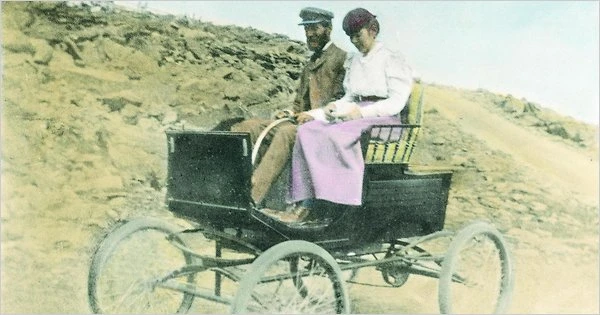
A good friend of mine, during a discussion on fuels, EVs and similar topics, wondered whether steam could be used to drive a car. I was sceptical, but it turns out that I was wrong. A little over 100 years ago, steam-powered cars were indeed a thing. They aren’t just a steampunk fantasy, as I had thought.
One of the most popular type of steam-powered cars was invented by the Stanley twins in the USA at the end of the 19th century. Bizarrely, F.E. and F.O. Stanley also invented one of the first photographic airbrushes, as they started their business ventures in the area of photography. However, automobiles were a lot more interesting, and they started the Stanley Motor Company in 1902 after an earlier attempt with a company known as Locomobile.
At that time, many internal combustion engines that ran on petrol or diesel needed a crank to start them up. These cranks were tough to turn and required a fair bit of elbow grease. They could even be dangerous, as if the car backfired while someone was cranking it, this could leave the person doing the cranking with a broken arm. However, the Stanley Steamers used gasoline (petrol) to generate a good head of steam, which provided the power to turn the wheels, and they didn’t need cranking. Stanley Steamers were designed with safety in mind, as they had a system in place to prevent the boiler from exploding if too much heat and pressure was generated.
For its time, the Stanley Steamer had some fairly impressive specs. It was a rear wheel drive affair, and didn’t require a transmission or clutch system, meaning that they were easier to drive. The power output varied depending on the engine type. The basic model (the compact engine) could deliver 7.5 kW. Two twin-cylinder engines were developed, the smaller one (3¼-inch bore and 4¼-inch stroke) also put out 7.5 kW, but the larger one (4-inch bore and 5-inch stroke) delivered a massive 15 kW.
For its time, the Stanley Steamer was quite fast. In fact, a customised version of the Stanley Steamer known as the Stanley Rocket Racer became the holder of the world land speed record for automobiles over a mile, clocking up 204 km/h in a trial at Daytona. This record stood for five years, and remained the best time over a mile for a steam-powered car until 2009.
As time went by, the Stanley twins refined their design, switching to lightweight aluminium bodywork and features such as condensers that harvested the steam so that the range of the water tank could be extended.
However, the makers of cars with internal combustion engines managed to find an alternative to the crank: the electric starter motor. This meant that the drawbacks of cranks were no longer, and the Stanley Steamer lost its biggest attraction, especially with the rise of cars produced via mass production and sold cheaply, Ford being the best known example of these. The Model T cost less than a quarter of the price of the Stanley Steamer and the engine of even the base model, which ran on petrol, kerosene or ethanol (now, that’s an idea worth revisiting), had the same power output as the best of the “Flying Teapots”, as the Steamers were known.
Given the stiff competition from the internal combustion engines inside the Model T and similar vehicles, things didn’t look good for the Stanley Steamer. Eventually, after one of the twins died (in a car crash, of all things), the company went under, ultimately closing in 1924.
The Stanley Steamer wasn’t the only steam-powered car in existence. Others have been made and sold, especially the Doble, and the idea has come back now and again over the past century or so, especially given concerns over pollution and the availability of fuel. Saab had a go at making a steam car in the 1970s during the fuel crisis of that decade (the project failed, unfortunately). An Australian inventor and enthusiast named Ted Pritchard tried to develop one in the 1960s and beyond and had some success. Until he died in the early 2000s, he was pushing for the use of steam-powered cars.
External combustion engines (which is what a steam engine is) aren’t as efficient as ICEs but they produce a lot less pollution, as they don’t burn as much fuel. They are heavy, thanks to the need for a strong boiler and a water tank. They can accelerate quickly once they’ve got a good head of steam up, but they do need a fair bit of time to boil and let the pressure build; this is one of the things that experimenters wanting to bring back the steam car try to work on.
And what about the future? Given the push towards vehicles that are less dependent on petrol and diesel, will we see attempts to make the steam car come back again? Electric cars have made a comeback (and how!), so perhaps steam will do the same.